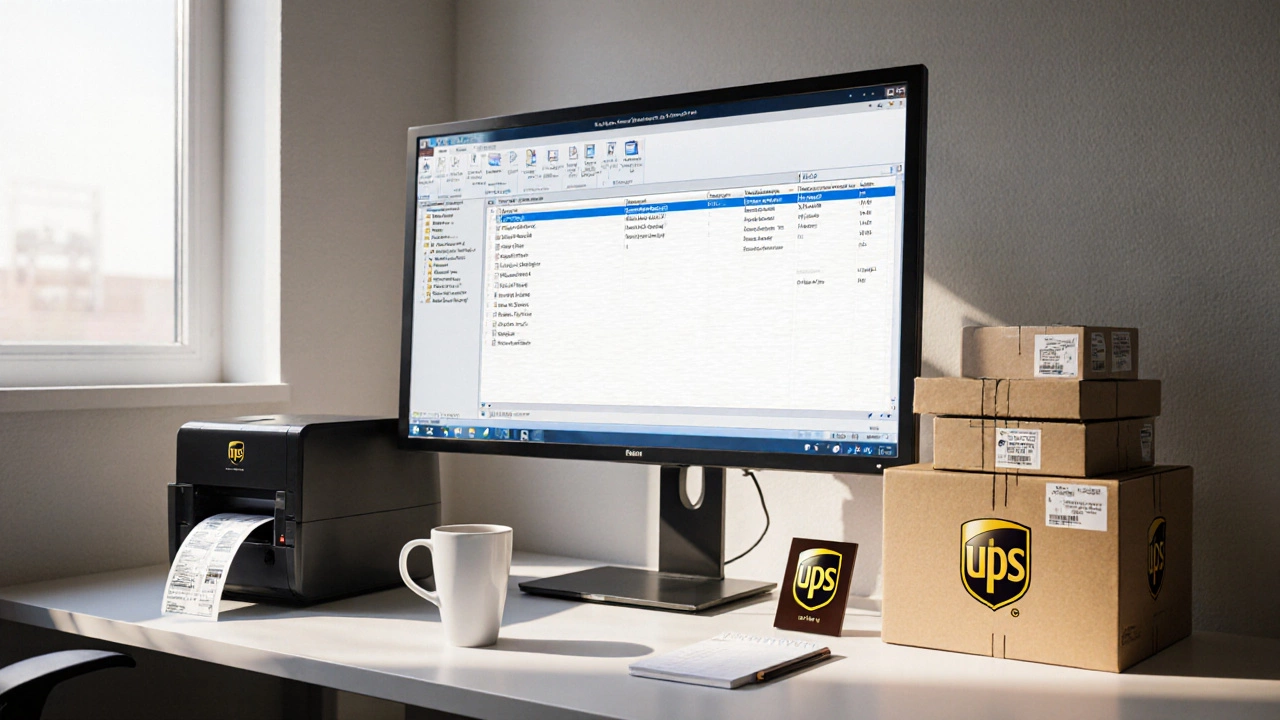UPS WorldShip: The Official UPS Shipping Software Explained
Discover what UPS WorldShip is, its core features, pricing, setup steps, and how it compares to other shipping software for high‑volume UPS shippers.
When talking about UPS shipping software, a digital platform that helps businesses plan, track, and bill UPS shipments. Also known as UPS Ship, it streamlines route planning, label creation, and real‑time tracking. UPS shipping software sits at the core of modern freight operations, connecting shippers to the carrier’s network with just a few clicks.
One of its closest companions is the logistics management system, software that coordinates inventory, warehousing, and transportation across a supply chain. This system supplies the data—order volume, stock levels, delivery windows—that UPS shipping software needs to generate accurate shipping plans. In practice, the two tools share APIs, so a change in warehouse demand instantly updates the carrier’s pick‑up schedule.
Another critical piece of the puzzle is courier pricing, the set of rules and calculations carriers use to determine shipping costs based on weight, distance, and service level. UPS shipping software pulls these rates in real time, allowing users to compare standard, express, and international options before confirming a shipment. This integration prevents surprise surcharges and helps businesses stay within budget.
When a package crosses a border, international shipping, the process of moving goods between countries, adds customs paperwork, duties, and longer transit times. UPS shipping software automates customs forms, calculates estimated duties, and offers visibility into clearance status. The software therefore reduces manual entry errors and speeds up delivery, which is essential for e‑commerce sellers who promise fast overseas shipping.
Warehouse managers also benefit from the synergy with warehouse management system, technology that tracks inventory locations, picking, and outbound loading. When an order is ready, the WMS signals the UPS shipping tool to generate a label, schedule a pickup, and update inventory in one seamless flow. This reduces bottlenecks and keeps order fulfillment on track.
Putting these pieces together creates a clear semantic chain: UPS shipping software encompasses real‑time rate fetching, requires integration with a logistics management system, and influences international shipping efficiency. Likewise, accurate courier pricing drives cost‑effective shipment planning, while warehouse management systems supply the order data the carrier software needs.
For small businesses, the biggest win is simplicity. Instead of juggling separate spreadsheets, phone calls, and manual customs forms, a single dashboard shows every stage—from order receipt to final delivery. Mid‑size firms gain scalability; they can feed dozens of outbound orders into the same platform without hiring extra staff. Large enterprises enjoy analytics, because the software logs every shipment, cost, and exception, feeding that data back into the logistics management system for continuous improvement.
Whether you’re figuring out how to lower freight costs, need faster customs clearance, or want tighter control over inventory moves, the articles below break down each aspect in plain language. Dive in to see real‑world examples, step‑by‑step setup tips, and the latest feature updates that keep your shipping process humming.

Discover what UPS WorldShip is, its core features, pricing, setup steps, and how it compares to other shipping software for high‑volume UPS shippers.